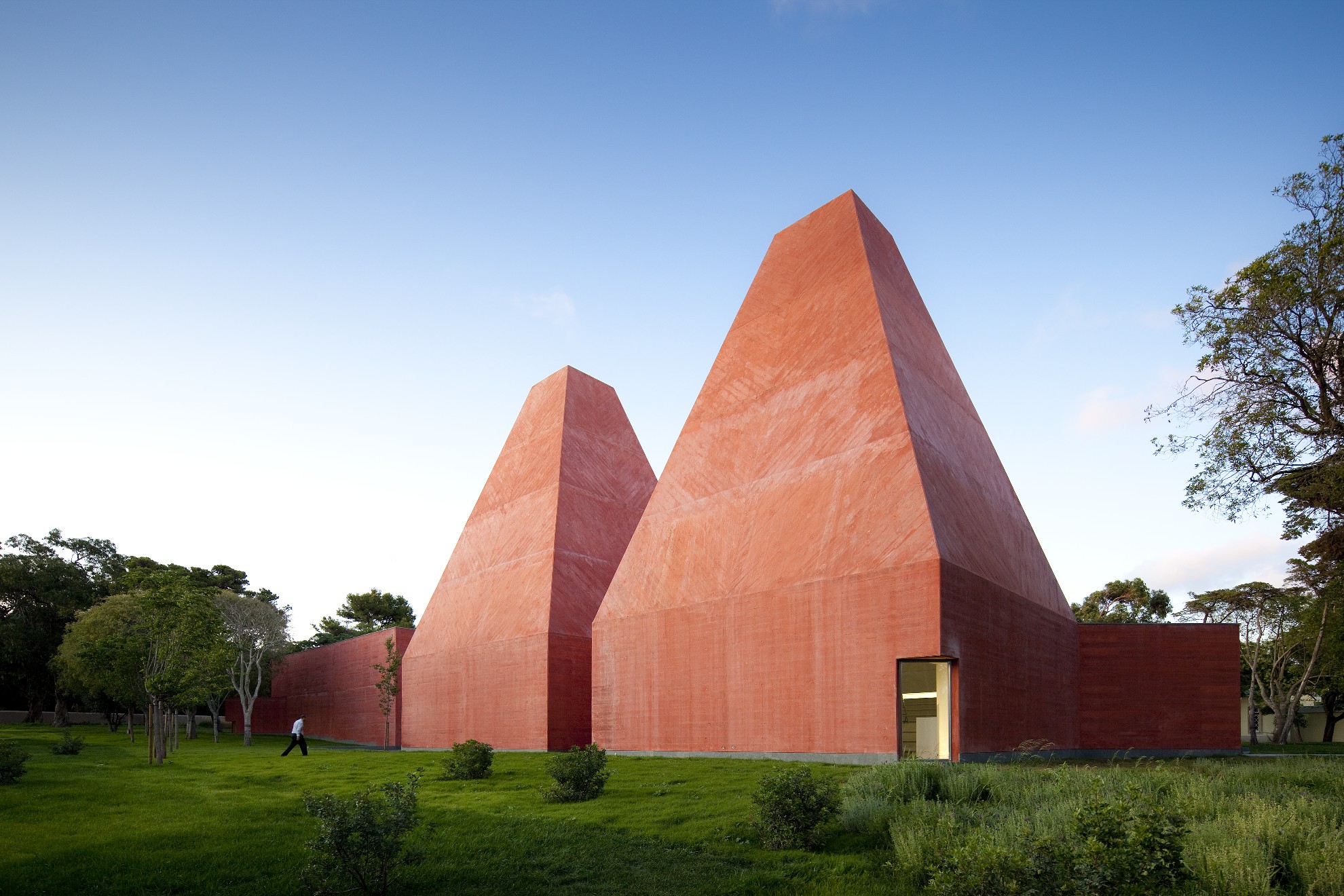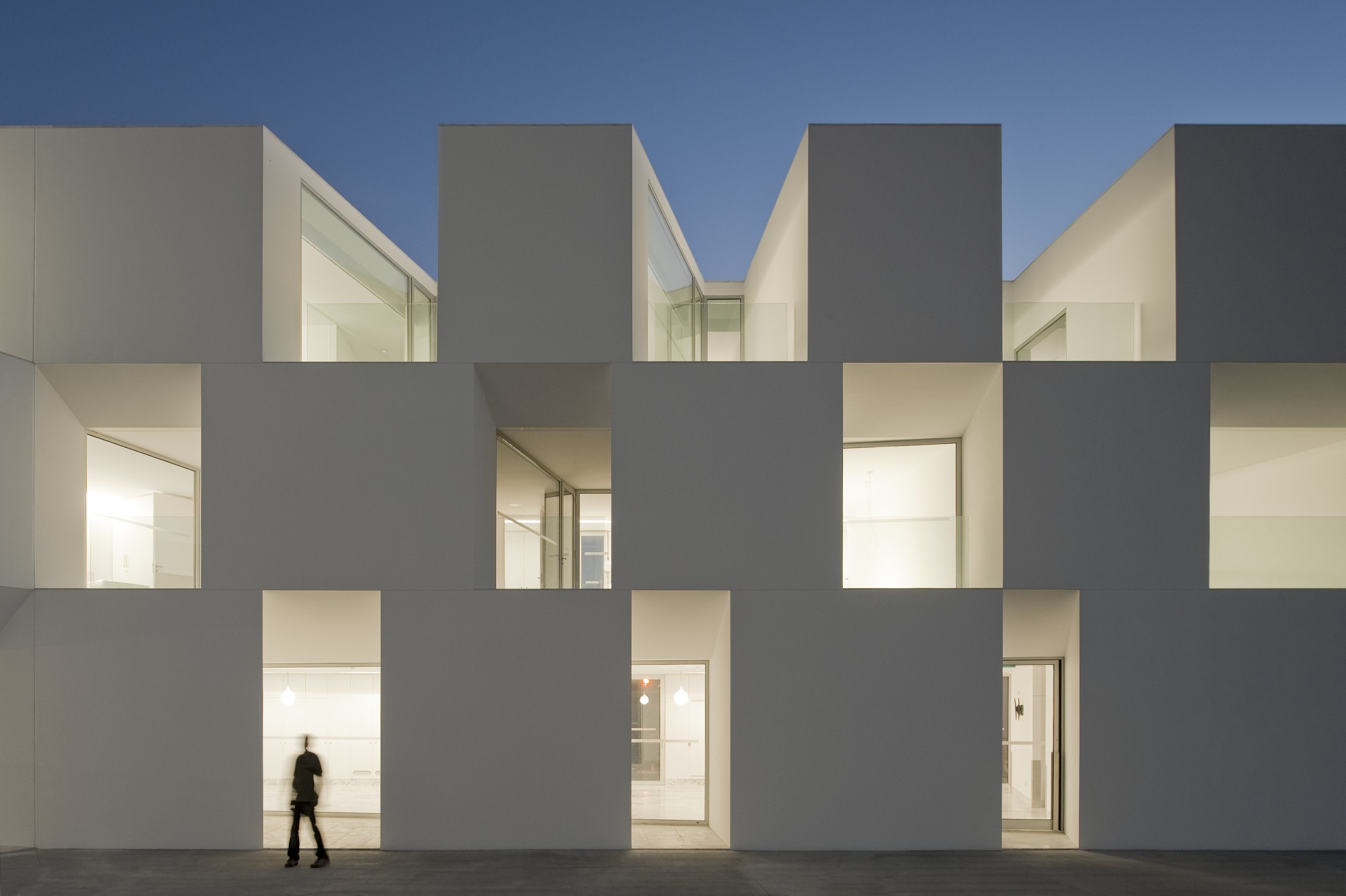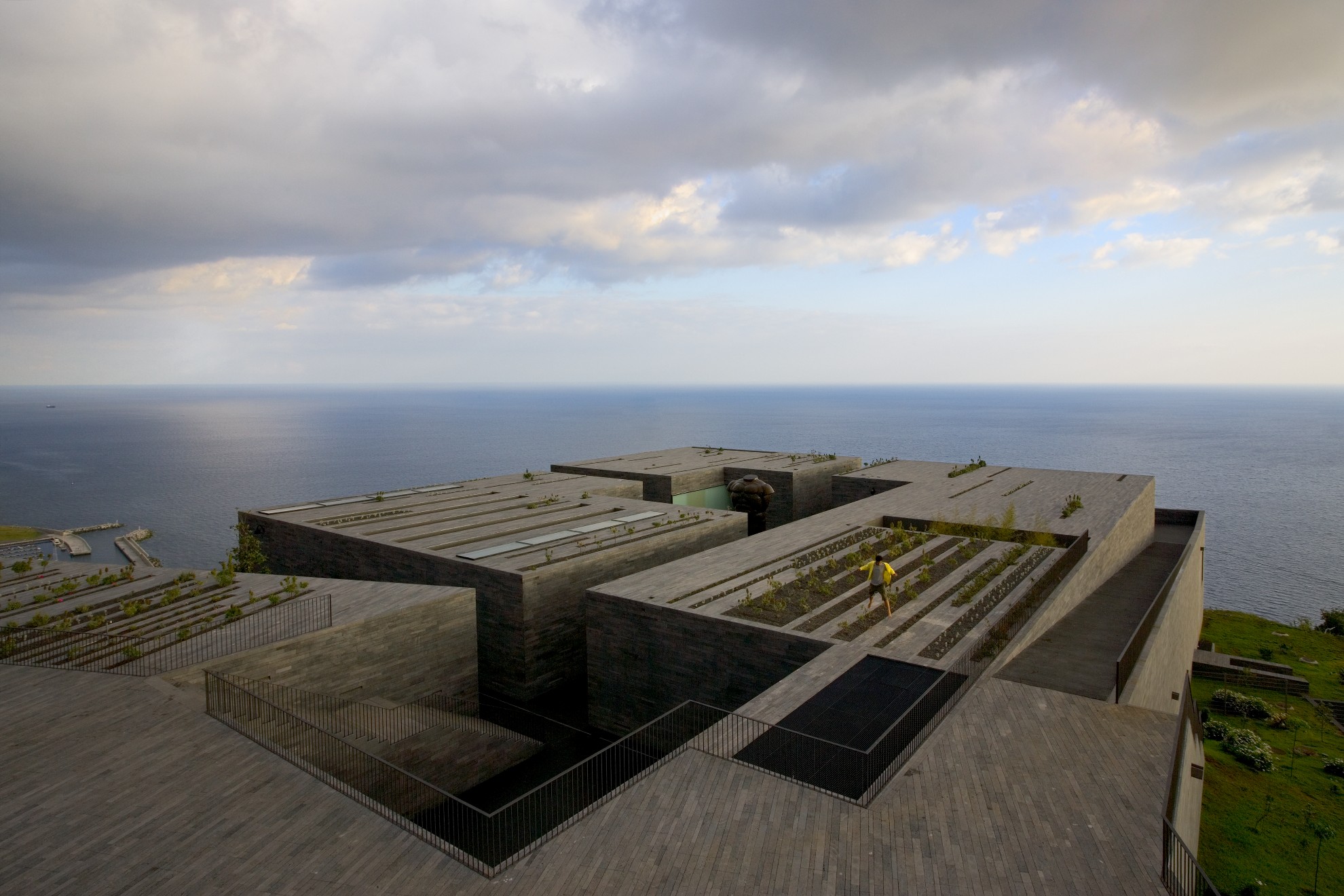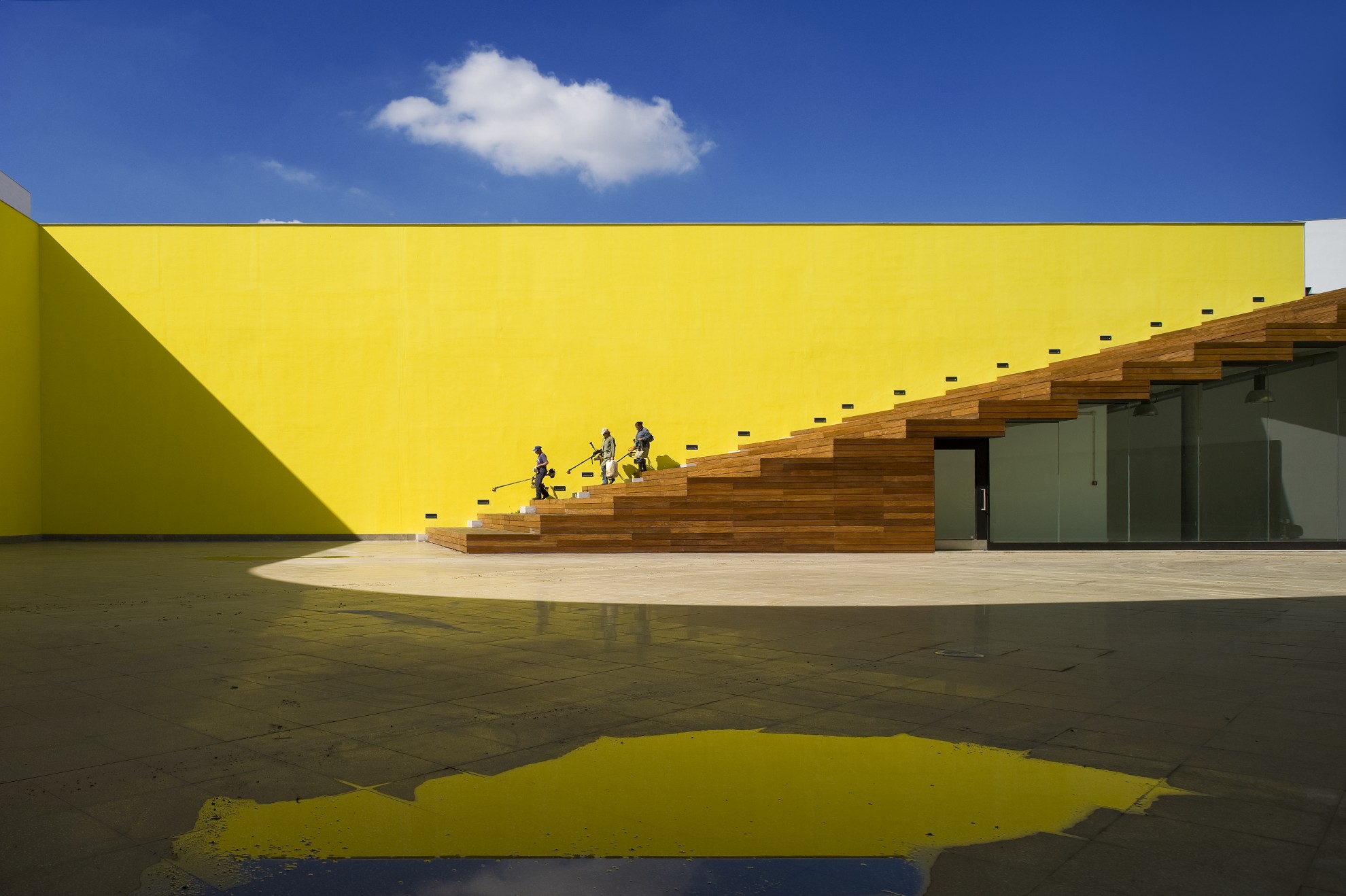Fernando Guerra and Sérgio Guerra founded studio FG+SG - Fotografia de Arquitectura in 1999. They have been responsible in large part for disseminating contemporary Portuguese architecture over the last 10 years. Fernando Guerra photographs the architecture, while Sérgio Guerra is responsible for producing the articles and managing the atelier.
After 5 years of activity, they decided to establish "FG+SG - Livros de Imagem" publishers to promulgate the various architectural works they photograph. Their work is regularly featured in a variety of publications at both the national and international level including Casabella, Wallpaper*, Dwell, Icon, Domus, A+U, among many others. FG+SG collaborates with various Portuguese architects such as Álvaro Siza, Carlos Castanheira, Risco Arquitectos, Manuel Graça Dias + Egas José Vieira, ARX Portugal, Promontório Arquitectos, Belém Lima, in addition to international architects such as Jordi Badia, Zaha Hadid, I. M. Pei, among many others.
The website ultimasreportagens.com has become the starting point for consulting contemporary Portuguese architecture with more than three hundred online features, as well as special articles and publications.
INTERVIEW
What is architecture for you?
For many years, it became a central part of my life. Today photographing and conveying archtecture is part of my daily routine. That's what I do with Sergio, my brother and partner, who manages the studio, and with my incredible collaborative team who help me on a daily basis in diffusing the works I am asked to shoot.
Frequent human presence in your photos makes me wonder whether you want to praise the majesty of the depicted architecture or you want to point out the human substance of the building.
Human figures just happen. My process of photographing is very natural and if sometimes the images are populated by people, in others I prefer silence, emptiness. But there are no rules on how it should be. It just happens. The images are not forcibly populated. The connection with people has to do with the fact that I usually work with images on the street, preferably while travelling, which is where the human figure has always been central.
For many years, architectural photography, with few exceptions, cultivated the practice of capturing images devoid of people. Fortunately, things are different today. There is nothing better than shooting pictures of normal life occurring in the course of a day, in which I am a privileged spectator following the rhythms, whether in an office or at home with a family for a day that follows its normal life in spite of my presence. This is the only kind of architectural photography I feel like doing, that which shows life occupying the space.
Which architects do you appreciate?
All those who work with architecture in the same way I work with photography : with passion and total abandon. If architecture is seen as just a nine to five job and not as a way of life, it will probably be reflected in the work and consequently in mine.
What have been your most exciting and challenging architecture photography projects?
I have already photographed over a thousand projects and it is difficult for me to highlight any specific one, because fortunately almost all have been challenging in some form or another. Of course, I've worked on projects that were more important than others, but my personal taste does not influence the outcome of the session. It is a challenge to know how to provide the same professional response in the form of beautiful images. Naturally, there are projects that are truly exciting, but good pictures can occur in any work. It's like taking pictures of a person, no matter whether you find that person pretty or ugly. With the right light, at the ideal moment, in the perfect place ... The portrait takes place. It's all a matter of waiting and knowing when to release the shutter.
What is your favorite photograph - either that you have taken, or that you have seen?
There are many images by me that I like. In fact, that is what motivates me from day to day: an endless search for the perfect image, which is sometimes almost an obsession, I confess. But I do not have a single favourite picture, I have many. Probably because I take pictures every day and regularly make new discoveries, taking new pictures that I love. But by their very nature, they are always images of the past. And on a day-to-day basis, I only think about the future. The www.ultimasreportagens.com website is my container of special images from that past. As we have almost 30,000 images online, with the number growing every day, I'm more interested in the entire body of my work, and its importance for Portuguese architecture, rather than individually frame by frame. Likewise, in relation to the work of other photographers, I am more interested in a body of work developed over the years than in a "one-hit wonder".
Do you want to mention some photographers you do admire?
The only truly special reference, at a time when all my heroes from 25 years ago produce very little or are already dead, is the American photographer for Magnum, Alex Webb. Almost all of my favorite photographs are by him and without a doubt he has influenced me most in my work. There are others that nourish me creatively but in the same proportion as new photographers appear every day. The world consisting of an elite group of photographers, as existed principally during the second half of the last century, is dissipating. Today we have incredible images taken by someone who picked up a camera some months ago which can constitute the start of a body of work that can become noteworthy. The Internet has made access to such work almost immediate and in creative terms is giving rise to an unparalleled new generation of visual artists. Easy access to cameras that can film, in addition to taking stills and access to thousands of channels of communication, is changing the rules of the game. And thankfully so, but as I've already said, successful careers are not made based on a single image or collection. The work that stands behind a career will always exist, and such work is generally not very glamorous or visible, so all is not as easy as it seems. To receive one or two "likes" on Facebook is easy on the other hand. To receive "likes" from clients in all the work you do, every day of the week, is very different. Consistency, more than just a virtue, is the main basis of a photographer's work. When you receive a commission, the clients make this clear based on your work, based the beautiful images you've created in the past. On the day of the session, only their work is important, and at that moment, you really sense that each day is, in a way, a new beginning.
What is the power of photography?
It's the power to help change the world. To enchant it, to inform it, to warn it. Despite the fact that the bombardment of images is greater today than ever before, access to photography, at the same time, has never been more trivialized, or democratized, which is good, because this new way of how we see and share the world can help us change the way we interact with it. What I do is primarily informational and it is part of this tidal wave of daily information. Individually, I do not change anyone's life. I'm aware of that limit and the relative importance of what I do. The most important thing is always the work that I have photographed. The image serves as a messenger. It's an important mission, but it never substitutes an actual visit, if possible, for that is the real experience.
Are there great buildings that do not photograph well?
There are buildings that are more easily photographed than others. Not because they are necessarily better designed, but because they seem to display themselves well, as if they knew how to work the camera as a fashion model does. And there are others, which, although beautiful, don't work as well, whether because of the surroundings, the weather or its scale. It is up to the photographer to neutralize this difference.
Do you have any do's and don'ts for architectural photography?
Many "don'ts". There are things that do not interest me to see or do in a session of architectural photography. Most of them are technical.
As for the "do's", nothing is pre-defined and that is what is good about the area I work in. After questions of technique go to work unconsciously in the head of the photographer, in which it is not a matter of thinking about how to do it, but what I want to capture, the work begins to emerge naturally. The only limit in terms of quality of a successful session is the photographer. It is not a fire brigade regulation, the client's taste, or city council impositions that constrict a job. Such things can be both good as well as intimidating. There are no excuses. When I worked as an architect, my life was much more limited and frustrating due to all these factors that influenced the creative process. Now, I am the limit.
What is the most awe inspiring architecture that you have ever seen up close and personal?
When you are at a different site every day, it is good when an element of wonder occurs. As I have the good fortune of working with great architects, that feeling happens often. My first contact upon arrival at a site is little more than taking a tour around it as an architect, in which I observe the work of a colleague, and sometimes that is where the surprises begin. I'm surprised both by new people with their first project as by veteran architects. I am not interested in only working with venerated stars and I very much appreciate the fact that every day I receive new commissions from all types of studios, whether large or small, from within Portugal or without. It's an exciting time to do what I do, and no price can be put on having a different office every day.




























